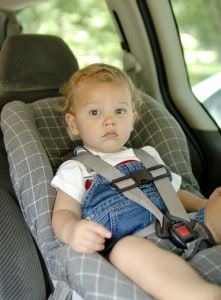 Car crashes remain the leading cause of death for children between the ages of 1 and 12, but proper child safety seat placement and use can reduce fatal injury by 71 percent for infants and 54 percent for toddlers, according to the National Highway Traffic Safety Administration (NHTSA). However, NHTSA reports that 3 out 4 car seats are not properly installed.
Car crashes remain the leading cause of death for children between the ages of 1 and 12, but proper child safety seat placement and use can reduce fatal injury by 71 percent for infants and 54 percent for toddlers, according to the National Highway Traffic Safety Administration (NHTSA). However, NHTSA reports that 3 out 4 car seats are not properly installed.
According to NHTSA, incorrect seat placement is one of the most common child safety seat installation mistakes, along with poor-fitting car seats and improper installation in relation to a vehicle’s airbags. To ensure proper seat placement, follow these guidelines from SafeCar.gov:
- Never place your child’s car seat in front of a passenger air bag.
- Place an infant’s car seat in the rear-facing position in the center of the back seat. Studies continue to show that this placement and orientation is the safest place for a baby. According to a study published in Pediatrics, children under the age of 3 who are placed in the center of the back seat are at 43 percent less risk of injury than children placed behind the driver or passenger seat. Keep children in this position until the age of 2 or until your child reaches the seat’s rear-facing height and weight limits.
- Place toddlers in a forward-facing car seat with a harness in the center of the back seat. Keep your child’s car seat in this position until he or she reaches the seat’s weight or height limit.
- Place children weighing 40 to 100 pounds (ages 4-12 and up to 4’9”) in booster seats anywhere in the back seat. Booster seats should be used with a shoulder and lap belt. Keep children in this position until they can sit with their knees bent over the vehicle’s seat while keeping their back against the seat back.
With any form of child safety seat, always read both the vehicle owner’s manual and the instructions that come with the seat to make sure you install the seat properly.
The process of properly placing and installing a child safety seat can be confusing and frustrating, but with the right information and a car seat that fits both your child’s size and your car, car seat installation can be a breeze. For more tips and guidelines on proper car safety seat placement and installation, visit SafeCar.gov.
